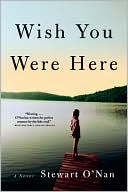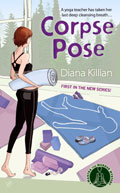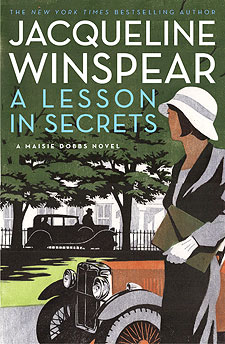A Reading Log
"We, as a species, are always looking for cathedrals made of fire, and part of the thrill of reading a great book is the promise of another yet to come, a book that may move us even more deeply, raise us even higher."--Michael Cunningham
Saturday, June 18, 2011
In one sense, Stewart O'Nan's novel Wish You Were Here is Seinfeldian. That is, nothing happens in it. This is not to say, however, that it is funny. In fact, it is mostly sad, or perhaps it would be more precise to say it is wistful, nostalgic, regret-tinged. . .I read it because a friend recommended O'Nan's Emily, Alone, which is its sequel. Wish You Were Here is the story of an extended family's final week at their lakeside vacation home in Chautauqua, New York. Emily, the seventy-something matriarch, has sold the house in the wake of her husband's death.
I can't think of another book that tells the story from the point of view of as many characters as this one does. In addition to Emily, there is her husband's sister, a retired teacher who never married; Emily's two grown children, Ken and Meg; their children, a boy and girl apiece; Ken's wife, Lisa; and the dog, Rufus. O'Nan masterfully moves from the point of view of the widowed Emily, whose children's fates both disappoint and confound her, to those of the two ten-year-old boys, one of whom is reeling from his parents' recent separation and his mother's alcoholism, while the other is driven to petty theft by forces beyond his control. He is equally comfortable describing the inner lives of the teenaged girl cousins, one of whom is tormented by the sudden development of a huge crush on the other, her first-ever attraction to the same sex. The coverage of the characters is spread pretty evenly, with Emily's son Ken perhaps receiving slightly more than the others. Ken is a weak, people-pleasing type of person who is pulled in many directions--his mother is depending on him to fill in for his dead father; his sister has always relied on him and needs him more than ever now that she is facing becoming a single parent and trying to live without alcohol; and his wife is terribly jealous of his closeness with his sister. For his part, Ken would just like time to indulge in his beloved pastime of photography, which is at a kind of crisis point, his mentor having challenged him to try to do it differently, with more spontaneity and less analysis. O'Nan's narration of Ken's thoughts about arranging shots and the descriptions of, for example, the way the light hits them, are cinematic tours de force.
Unfortunately for the characters, it rains continuously for the first half of the week, confining them to the house and keeping them from getting away from the family members they want to avoid. As I said, very little "happens" in the usual sense of the word in this book. The story is more about the conversations that various pairs of characters have about life's momentous events, the things that are said and unsaid and the ways in which loved ones do and do not react exactly as one knows they will. There is a bit of drama around the question of whether Emily will go through with the sale of the house after it emerges that neither her children nor her sister-in-law want her to, and she herself can barely endure the idea that this is their last time there.
Even when it is not describing one of Ken's potential photos, O'Nan's writing in this book is extremely precise in terms of detail, reminding me of Jane Austen's quote about working on a two-inch-wide bit of ivory with a very fine brush. Once or twice I felt almost claustrophobic and thought of not finishing it--this is a thick book, longer than O'Nan's other novels. At the same time, though, when I wasn't reading it I wanted to get back to the lake house to find out how the very small dramas would continue to unfold. And I do want to find out what more will be revealed in Emily, Alone.
Sunday, June 12, 2011
While traveling this spring, I visited one of the many Borders that are, alas, going out of business. The only good news in that situation is the tremendously great buys available as they reach the end of the line. Among the few mysteries left on the shelves was one with a yoga theme, by Diana Killian. It wasn’t the first in the series, so I had to procure that one as an e-book. Corpse Pose was a rather lighter mystery than I usually read, as themed series tend to be, but it was perfectly suited for what I needed at the time, just a bit of a diversion while waiting for airplanes and during lonely moments in hotels and at the occasional solo restaurant dinner. Happily, Killian has another series featuring a scholar of English literature. High Rhymes and Misdemeanors is the first one of those, and judging from the first few chapters, these are also very light entertainments, but they are also pleasingly literate.
Also on that trip I read the eighth Maisie Dobbs mystery, A Lesson in Secrets, by Jacqueline Winspear. I can hardly believe there have already been eight entries in this series, and even more amazing is that they are of uniformly high quality, in terms of both the mystery plot and the character development of the protagonist and those around her. Here’s an illustrative passage from the latest book:
“Sandra was in a sort of limbo, where a past with meaning and promise was gone, and the future as yet held nothing she truly wanted. It was a feeling that demanded to be controlled; otherwise it would wreak havoc in the soul, a sense of angry pointlessness. Hadn’t that been why Maisie herself leaned on her work to bring a meaning that would ground her days? Her relationship with James, the intimacy of connection, was a spark that caught fire—could it all be gone now that she doubted him? Priscilla was right—and wrong. Yes, she controlled her feelings, keeping the dragon at bay with a carefully self-chaperoned life, a protected heart. But Priscilla made letting go sound like a simple task, as easy as a yacht slipping away from the harbor with the wind in its sails. Yet there was always a rock upon which to run aground, and Maisie knew it was her habit to keep a keen eye out for the rocks.”
Susan Hill continues to be one of my favorites among mystery writers. The Shadows in the Street, her fifth Simon Serailler mystery, is the best to date, and that is saying a lot! As is true of many thrillers, the personality and life of the detective are as compelling as the murder mystery, but Hill gives us not just Serailler’s life but that of his immediate family—his sister and her children, his father—and following them from book to book is part of the joy of reading this series.
Saturday, April 30, 2011
“Since we are all mortal, none of us will experience love without also experiencing loss. This book has done what no other has for me in recent years: it has renewed my faith in the redemptive power of love, the need to give and get it unstintingly, to hold nothing back, settle for nothing less, because when flesh and being and even life fall away, love endures. This book is proof.”
The book being reviewed was Diane Ackerman’s One Hundred Names for Love. The reviewer: Abraham Verghese. Verghese’s novel Cutting for Stone has been on the print paperback bestseller list for 64 weeks and the e-bestseller list for 12. The latter number probably corresponds to the number of weeks the Times has had an e-bestseller list. At least one person kept urging me to read Cutting for Stone. I had enjoyed his nonfiction pieces in the New Yorker some time back, so I had no particular resistance to the idea of reading his novel, but every time I read the little squib about it—“Twin brothers, conjoined at birth and then separated, grow up amid the political turmoil of Ethiopia”—I just wasn’t moved to seek out a copy. Its bestsellerhood gave me a bit of pause as well. Not infrequently is there a book that the rest of civilization appears to have bought and loved that I and a few friends are simply unable to appreciate (Reading Lolita in Tehran comes to mind). Thankfully, my resistance eventually melted away, and I am here to say that Cutting for Stone is one of the best books I have read in quite a while. Saying it is about “two brothers…” is, as the cliché goes, like saying Moby Dick is about a whale. The quote I began with gives you an idea of the depth of feeling Verghese is capable of. Yes, the book is about two brothers, but actually quite a bit of the action takes place before they are born. The story takes in the entire community of people who work at a charity hospital in Ethiopia. The vividly drawn characters are of different nationalities and temperaments. Their common goal is to give medical help to the poor, but the intensity of their setting leads, inevitably, to intense emotions and relationships. Which have consequences, like the aforementioned twin boys. Enough said without spoilers. Just read it. This is one of those times that the masses are right in terms of the book they have bought and keep buying.
I’ve got hold of Verghese’s two memoirs and am savoring the thought of curling up with them. A friend says that they give insight into some of the background for the novel.
Sunday, February 06, 2011
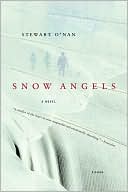 Pity the dear friend of mine who recommended this title to our book club. It was roundly criticized as so unremittingly bleak that there is not a lot to say about it except that O’Nan is a masterful portrayer of the lives of sad, dysfunctional people with no hope of recovery or redemption. Perhaps if we had read this in the midst of a beautiful summer we would have found something positive in it, but given that we are experiencing what has been called Snowmageddon, it didn’t have a chance. Still and all, this is an extremely well-written book by a very talented author, other works by whom I’ve enjoyed and even recommend.
Pity the dear friend of mine who recommended this title to our book club. It was roundly criticized as so unremittingly bleak that there is not a lot to say about it except that O’Nan is a masterful portrayer of the lives of sad, dysfunctional people with no hope of recovery or redemption. Perhaps if we had read this in the midst of a beautiful summer we would have found something positive in it, but given that we are experiencing what has been called Snowmageddon, it didn’t have a chance. Still and all, this is an extremely well-written book by a very talented author, other works by whom I’ve enjoyed and even recommend. 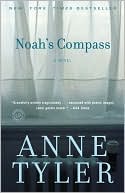
Published in 2010, this is Anne Tyler's 17th novel, and I enjoyed it every bit as much as her most highly acclaimed works, Breathing Lessons and The Accidental Tourist. Tyler is a kind of alchemist, whose compassionate vision allows her to take the saddest, most poignant aspects of life and magically convert them into humor. Liam Pennywell, the protagonist of Noah's Compass, is a typical Tyler misfit. He's 60 years old and doesn't have a success to his name, professionally or personally. He is knocked unconscious on the very first night he spends in the shabby Baltimore apartment into which he's been forced to downsize and wakes up in a hospital with no memory of the blow. Liam's family and few friends, who find him a puzzling curiosity (or worse) in the best of times, do not understand why the fact that he cannot remember the incident troubles him so desperately. To say much more would be to give away the delightful twists and turns of quirky Tylerian fate to which this leads. Suffice to say that Liam stumbles upon a woman who is every bit as much of a misfit as he is; however, thanks to Tyler's fidelity to life's messiness, that does not mean we get an ending that is neatly tied up with a bow.
Tuesday, January 25, 2011

Saturday, November 06, 2010
Saturday, October 09, 2010
 I read two really great books this past week. What they had in common was beautiful writing that conveyed a deep understanding of and compassion for this dilemma called life, as well as the kind of page-turning suspense you'd expect from the best mystery. But in every other way--setting, characters, style--they were as different as could be. William Trevor's Love and Summer, which takes place in the Irish countryside, centers on the life of a young woman who, after her upbringing in a Catholic orphanage, is sent to be the maid to a widowed farmer. I surveyed reviews of it after reading, to see if it was as appreciated as it deserved to be, and was relieved to discover that there was considerable angst when it was long- rather than short-listed for the Man Booker Prize.
I read two really great books this past week. What they had in common was beautiful writing that conveyed a deep understanding of and compassion for this dilemma called life, as well as the kind of page-turning suspense you'd expect from the best mystery. But in every other way--setting, characters, style--they were as different as could be. William Trevor's Love and Summer, which takes place in the Irish countryside, centers on the life of a young woman who, after her upbringing in a Catholic orphanage, is sent to be the maid to a widowed farmer. I surveyed reviews of it after reading, to see if it was as appreciated as it deserved to be, and was relieved to discover that there was considerable angst when it was long- rather than short-listed for the Man Booker Prize.  It's hard to write about Scott Spencer's Man in the Woods without giving part of the plot away, so suffice to say that it is set in the northeast United States in our time (around the year 2000) and delves deeply into the question of how and why we live. But far from being heavy-handedly philosophical, Spencer keeps you guessing, until the very last page, how these questions will be resolved for one man and his makeshift family--himself, a woman, child, and dog.
It's hard to write about Scott Spencer's Man in the Woods without giving part of the plot away, so suffice to say that it is set in the northeast United States in our time (around the year 2000) and delves deeply into the question of how and why we live. But far from being heavy-handedly philosophical, Spencer keeps you guessing, until the very last page, how these questions will be resolved for one man and his makeshift family--himself, a woman, child, and dog."Found in Translation," Michael Cunningham's New York Times op-ed piece of Sunday, October 2, begins with insightful musings on the translation process but quickly plunges into the heart of the matter to discuss writers, readers, and creativity. You must read it all, but here's a sample sentence: "We, as a species, are always looking for cathedrals made of fire, and part of the thrill of reading a great book is the promise of another yet to come, a book that may move us even more deeply, raise us even higher. . ."
